Yes, I know it’s not 2017 yet. But like the auto industry we’re getting a jump on the new year and rolling out a product line refresh before we head into the holidays.
Our product research tools aka the Charts, Rankers and Finders set the industry standard for consumer networking product research and comparison tools. But they were long overdue for some major work, which I’m now happy to say has been done. So without further ado, let’s explore what’s new!
The New Charts
The Charts have been given a fresh look, which is intended to be more mobile friendly and make controls more self-explanatory. The Charts have been simplified too, removing little-used views and controls. Gone are the Performance Table and Price vs. Performance Views. The Radar plot view is also no more. The view is now clearly organized into three sections: Filters; View; and Data.
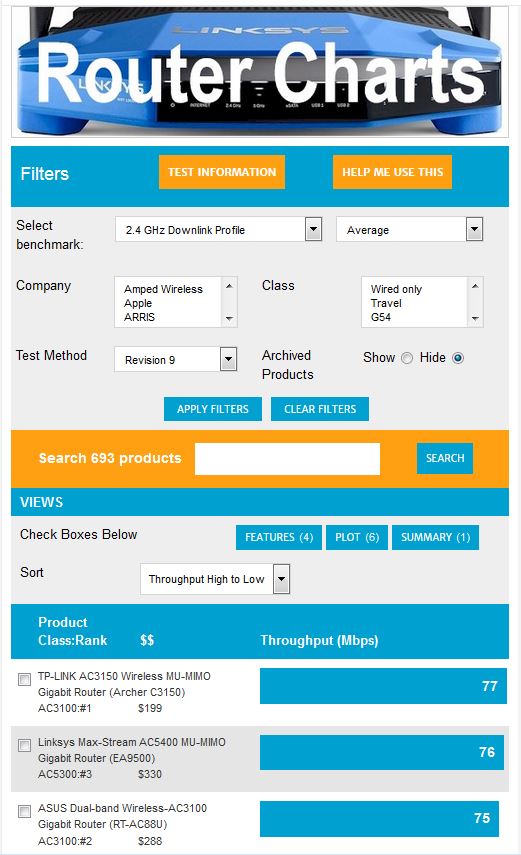
Router Chart view
Our test methods change from time to time and most changes make direct comparison of results using different methods invalid. Yet the Charts have allowed users to make those comparisons, despite disclaimers to the contrary, by displaying the results from all test methods by default.
No more. The new Charts use a dropdown Test Method selector to display results for only one Test Method at a time. So when you look at a Chart, you are looking only at data that can be validly compared.
We’ll start our Chart tour with the Test Information and Help Me Use This buttons found at the top of the Filter section. Clicking Test Information pops up a window with links to test method explanations and information about the benchmark being viewed. Clicking Help Me Use This pops up general instructions for using the tool. This text changes for each product type and tool you’re using. So if you’re at a loss for what to do, just click and read!![]()
As an example, here’s the Help Me Use This Router boilerplate. It describes the controls you’ll find in the Chart views.
The Charts show results for the selected benchmark sorted in descending performance order by default. Use the Select Benchmark dropdown to choose a benchmark. Benchmarks that have multiple values will display another selector to the right of the Benchmark selector to change the data viewed. Options are Average (default), Maximum, Minimum and individual data values.
The benchmark view can be filtered using the Company (shift-click to for multiple companies) and Class filters. Make your selection(s) and click the Apply Filters button to filter the view. Changing the Test Method selector will refresh the view immediately.
Archived products are hidden by default. Use the Show / Hide buttons to control this filter.
The Clear Filters button will reset all filters and restore the default view.
The Views section controls how the data are viewed. Three Views buttons are used with check boxes next to each product shown.
- Features: Check the boxes for up to four products and click for a view of product features
- Summary: Check the box to the left of one product and click this to see all its benchmark results
- Plot: Check the boxes for up to six products for a plot of the selected benchmark. This control is shown only for benchmarks that have multiple data points
The Views section also contains a Sort selector. Benchmark data can be sorted by Throughput (default), Price and Rank, with High to Low and Low to High options.
Each product listing has the following links:
- Product description link takes you to its review
- Class:Rank value takes you to the Router Ranker for the product’s class
- Price takes you to our shopping partner, Amazon
Introducing Product Search
Since every product is not tested with every test method, the product you’re looking for may not be in the Chart view you’re looking at. That’s why the Search box has been added. Simply type the manufacturer name and model number into the Search box (don’t worry, there’s an auto-complete function to guide you), click the Search button and you’ll be taken to a page with a comprehensive summary of the product.
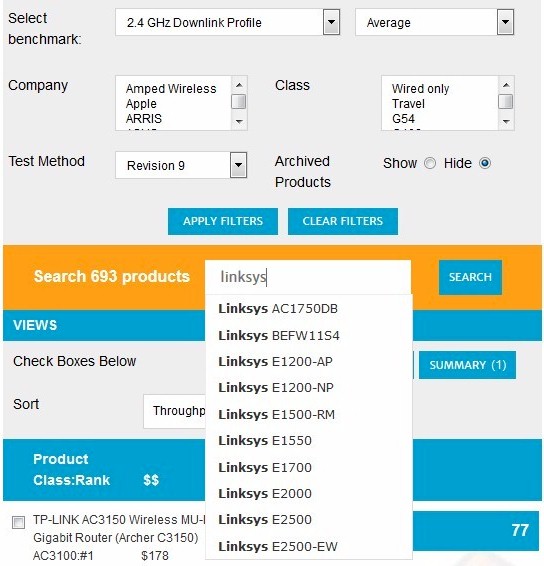
The Search Box
The first part of the Search results is the At A Glance (AAG) box you see in our product reviews that contains a quick summary of the product along with links to our review, Amazon shopping and product website page. The Search box is there, too, so you can quickly move on to explore other products.

Search results – At A Glance section
Below that, you’ll find general information about the product class, including general guidance about performance. Below that are links that expand to reveal the same Performance Rank, Benchmark Summary and Feature Summary views you get from the Ranker, Chart and Finder pages.
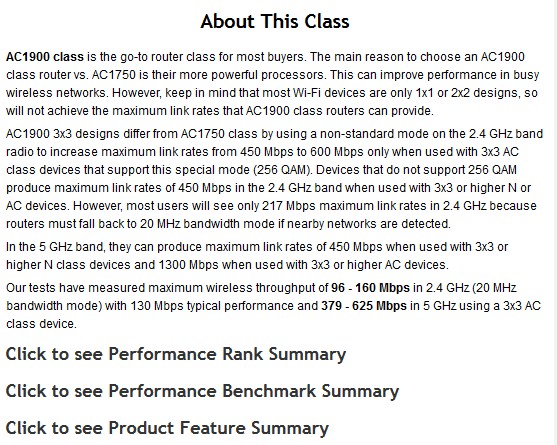
Search results – About This Class
So instead of clicking around to gather information, it’s now all in one place.
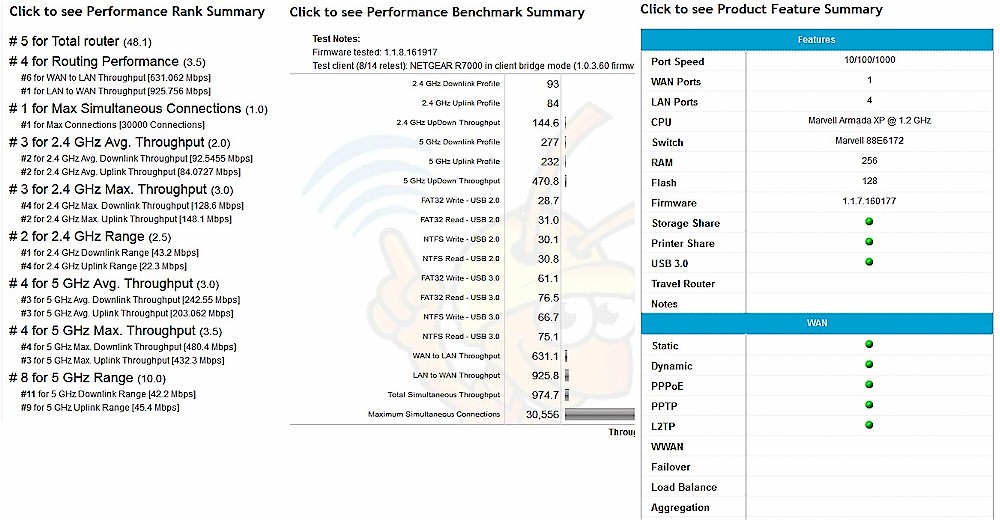
Search results – Rank, Benchmark, Feature details
The next expandable section contains general information and / tips about the type of product you’re viewing. Here’s what you’ll see for Routers, as an example.
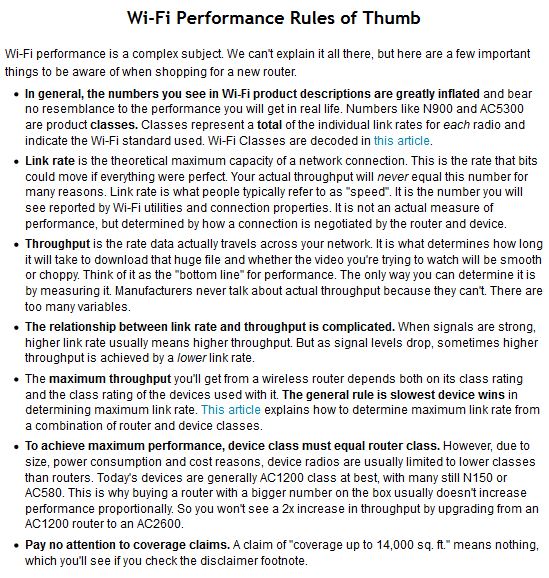
Search results – Product selection tips
Finally, you’ll see top-ranked products in the same class as the one you’re looking at, so you can easily research alternatives. Clicking on each one will take you to its Search result view.
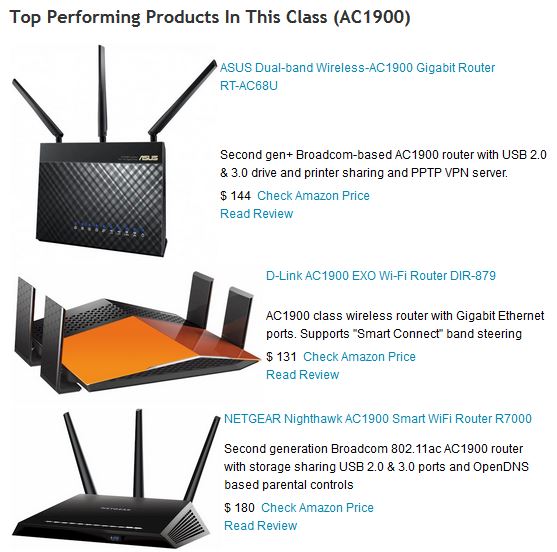
Search results – Top-ranked alternatives
One important thing to note about search is that it is product category limited. So the Search box shown in the Router chart won’t find NASes and vice-versa. Just change to the Chart for the product you’re interested in (NAS, Powerline, Wireless Adapter / Bridge, etc.) to access search for that product category.
The other important Search feature is that it handles products we haven’t reviewed. Search first looks to see if a product is in our database. If it isn’t, it looks for it on Amazon and returns some general data about the product. It will also try to class wireless products so that it can provide general guidance on expected performance for the product class.
If the product can’t be automatically classed, you’ll still get helpful information, but without performance guidance. We’ll be notified that the product has been added, however, and will class the product manually so that future searchers will get better results.

We wish we could have reviewed this many products!
We’re limiting Search to Routers and NAS categories to start, but plan to expand Search to other product categories soon.
Ranker Changes
Aside from a design makeover, the Ranker is largely unchanged. The Ranker already showed results filtered by Test Method and that carries forward to the new version. Results can still be sorted by ascending / descending price and sub-ranks can be viewed using the Rank selector. Rankers are available for all product categories we cover.
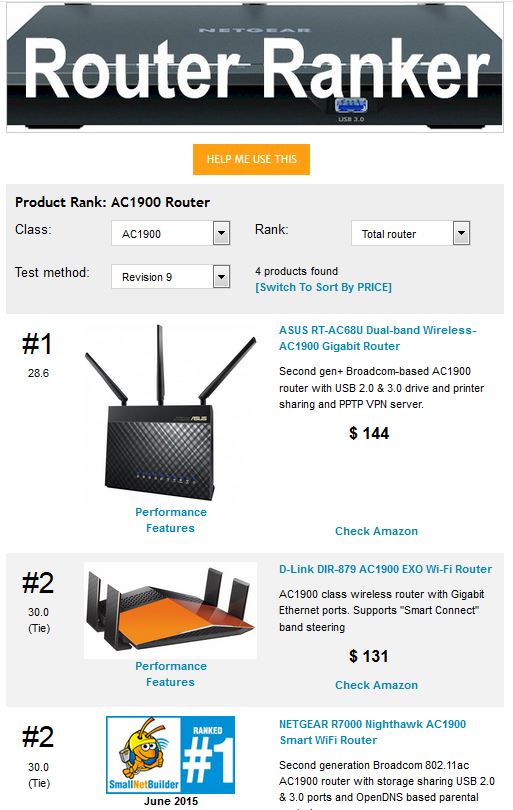
The Ranker is largely unchanged
One important change should be noted in the averaging method used in both the Ranker and Chart views. The graphic below helps illustrate the change. The old charts averaged only non-zero points, which could increase the average value for benchmarks that had fewer data points. This was especially true for products that disconnected early at higher throughput levels vs. those that hung on until throughput dropped into single digits.
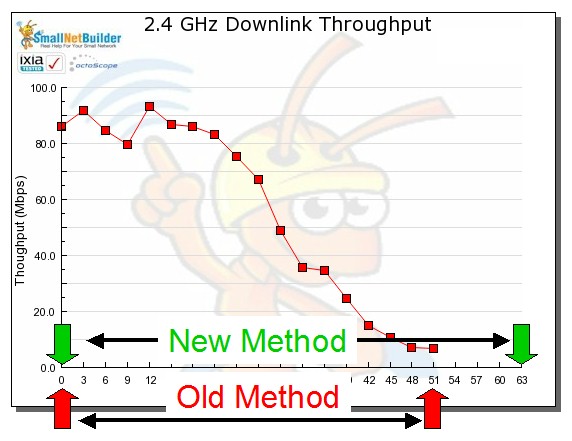
The New Average method is fairer
The new method averages over the entire benchmark range, which is 0 – 63 dB for 2.4 GHz benchmarks and 0 – 45 dB for 5 GHz. So if you’re wondering why ranking changed for some product between the old and new charts, this is one of the reasons.
You’ll also note that only "profile" benchmarks are now available in the new Charts. The "profile" benchmarks use the entire multi-point data set instead of three or four selected points used in the old "Consolidated" method benchmarks. Old products tested with benchmarks that used four or six point "open air" methods have been removed from the charts (most are no longer available), so we were able to remove those benchmarks and the confusion that went along with them.
Finders
The Finders remain mostly unchanged and are still the best way to find products by attributes (processor, RAM size, etc.)
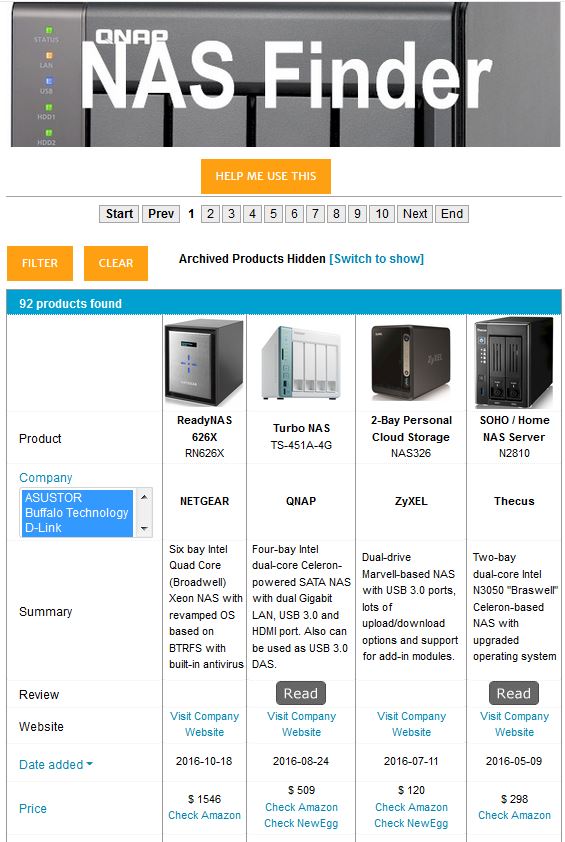
NAS Finder
What Happened To Router Chooser?
If you’re looking for the Router Chooser, you won’t find it; the Search feature replaces it.
Closing Thoughts
If you really need to access the old charts to see the complete set of benchmarks, just follow the Old Tools link that you’ll find up in the nav bar Tools menu.![]()
As with any major rework, there are sure to be bugs, errors and omissions. So please help us track them down by letting us know if you find anything strange, or just can’t find what you’re looking for.
We hope you like the new charts!
